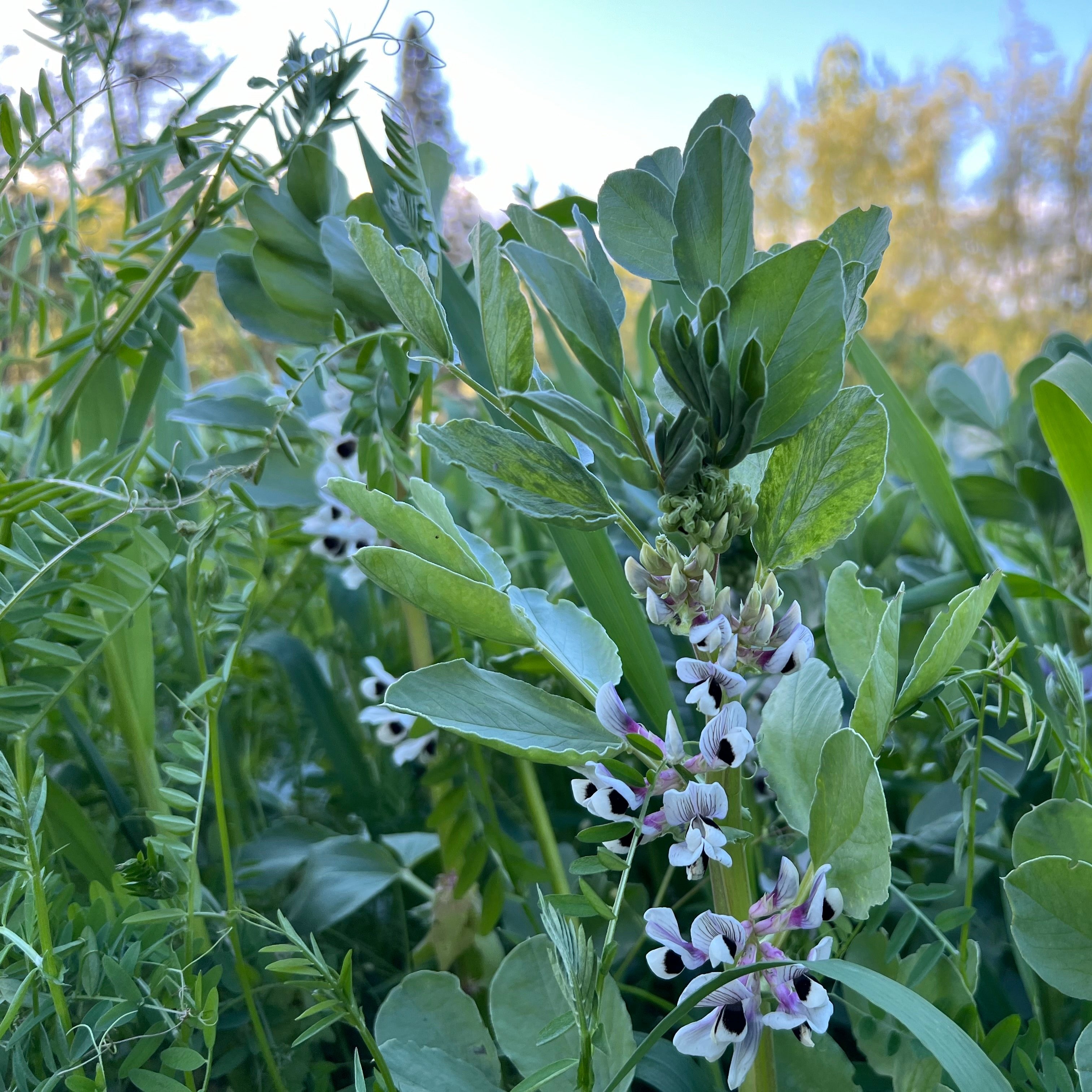Cover Crop Seed
Cool Season Soil Building Mix
Growing a cover crop (aka Green Manure) is a wonderful way to build soil organic matter, protect the soil against erosion, fix nitrogen, provide habitat for beneficial insects & pollinators and so much more! We typically plant cool season cover crops after harvesting the last of the summer garden which is typically in October here in Oregon. Alternately, they can be planted as early in late winter or early spring as possible.
This mixture of cool season varieties is a proven mix that we use here on our farm and in gardens. The cereal grain Oats sprout quickly and provide a vertical scaffold for the peas and vetch to climb. The 2 peas sprout quickly and provides fast growth and coverage and abundant nitrogen fixation. A cereal grain and legume mix can grow from 2 to 5 tons (!!!) of biomass per acre, that's 40-100 pounds for a 100 square foot area.
* We regret that we are unable to ship this product internationally in amounts larger than 1 pound *
Seeding rates: 75-150 pounds per acre
1/4-1/2 pound per 100 sq.ft.,
5-6# for 1000 sq.ft. A cereal grain and legume mix can grow from 2 to 5 tons (!!!) of biomass per acre, that's 40-100 pounds for a 100 square foot area.
Cool Season Soil Building Mix contains: (Cayuse Oats, Lana Vetch, Magnus Peas, Dundale Peas, Barley, Bunker Triticale) 1/5th each. Roughly 60% legume and 40% grain.





